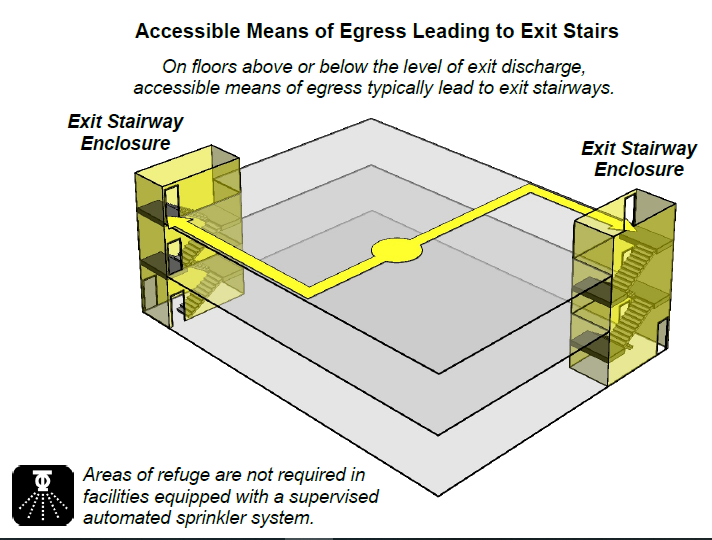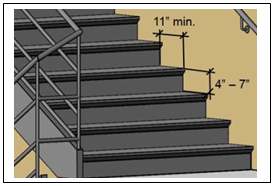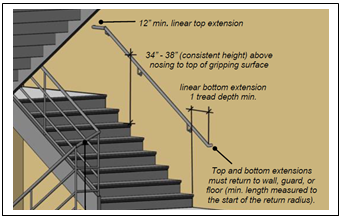| 1. |
A means of egress is an unobstructed path to leave buildings, structures, and spaces. A means of egress is comprised of exit access, exit, and exit discharge. |
|
|
True |
|
|
False |
| 2. |
The IBC requires at least two means of egress from all spaces and buildings with few exceptions. Some spaces and buildings are allowed to have one means of egress if the travel distance to an exit is short and the occupant load is low. For example, a business occupancy with no more than 30 occupants and a maximum exit access travel distance of 75 feet |
|
|
is permitted to have a single means of egress. |
|
|
Must have two means of egress |
| 3. |
IF the occupant load is more than 500 a minimum of 3 means of egress and if the occupant load is more than 1000 at least 4 means of egress is required for the building. |
|
|
True |
|
|
False |
| 4. |
On floors above or below the level of exit discharge, __________________ must lead to exit stairways, horizontal exits, or to elevators equipped with standby power. These are locations where those unable to use stairs can await assisted rescue by emergency responders. It is standard operating procedure for emergency responders to check these locations first for anyone needing assistance.

|
|
|
Accessible means of egress |
|
|
An elevator |
| 5. |
The IBC contains requirements for exit stairway enclosures that address fire-resistance and smoke protection, stairways and handrails, signs, and other features. The ADA Standards apply requirements for stairways to each stair that is part of a required means of egress (§210). |
|
|
True |
|
|
False |
| 6. |
All steps on a flight _________ riser heights and uniform tread depths. Open risers are prohibited.

|
|
|
must have uniform |
|
|
can have different |
| 7. |
Handrails are required on both sides _________ continuous within the full length of each stair flight.

|
|
|
And must be |
|
|
But do not have to be |
| 8. |
A horizontal exit compartmentalizes a building allowing occupants to exit the area containing the origin of a fire into another portion of the building that is protected by fire-resistance-rated assemblies (doors, walls, ceilings, and floors). A horizontal exit separates a space into two exit access areas. IBC requirements for horizontal exits address fire-rated separation, opening protectives, capacity, and other features. |
|
|
True |
|
|
False |
| 9. |
In buildings with four or more stories above or below the level of exit discharge, at least one accessible means of egress must be an elevator with standby power and emergency signaling devices. Designed to remain operational even when regular electrical service is lost, they are used by emergency responders to move personnel and fire-fighting equipment and to provide assisted rescue. Like all elevators, they are not to be used independently by building occupants in emergencies. |
|
|
are to be used |
|
|
are not to be used |
| 10. |
Maneuvering clearance is required on the egress side of automated doors unless they are equipped with standby power or |
|
|
they stay open in power-off mode (§404.3.2). |
|
|
they stay completely closed in power-off mode. |
|